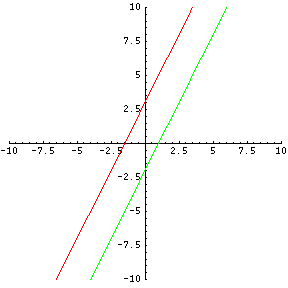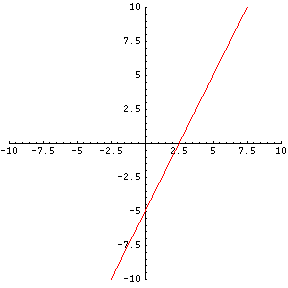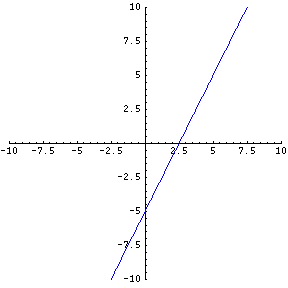

تاريخ الرياضيات

الاعداد و نظريتها

تاريخ التحليل

تار يخ الجبر

الهندسة و التبلوجي


الرياضيات في الحضارات المختلفة

العربية

اليونانية

البابلية

الصينية

المايا

المصرية

الهندية


الرياضيات المتقطعة

المنطق

اسس الرياضيات

فلسفة الرياضيات

مواضيع عامة في المنطق


الجبر

الجبر الخطي

الجبر المجرد

الجبر البولياني

مواضيع عامة في الجبر

الضبابية

نظرية المجموعات

نظرية الزمر

نظرية الحلقات والحقول

نظرية الاعداد

نظرية الفئات

حساب المتجهات

المتتاليات-المتسلسلات

المصفوفات و نظريتها

المثلثات


الهندسة

الهندسة المستوية

الهندسة غير المستوية

مواضيع عامة في الهندسة

التفاضل و التكامل


المعادلات التفاضلية و التكاملية

معادلات تفاضلية

معادلات تكاملية

مواضيع عامة في المعادلات


التحليل

التحليل العددي

التحليل العقدي

التحليل الدالي

مواضيع عامة في التحليل

التحليل الحقيقي

التبلوجيا

نظرية الالعاب

الاحتمالات و الاحصاء

نظرية التحكم

بحوث العمليات

نظرية الكم

الشفرات

الرياضيات التطبيقية

نظريات ومبرهنات


علماء الرياضيات

500AD

500-1499

1000to1499

1500to1599

1600to1649

1650to1699

1700to1749

1750to1779

1780to1799

1800to1819

1820to1829

1830to1839

1840to1849

1850to1859

1860to1864

1865to1869

1870to1874

1875to1879

1880to1884

1885to1889

1890to1894

1895to1899

1900to1904

1905to1909

1910to1914

1915to1919

1920to1924

1925to1929

1930to1939

1940to the present

علماء الرياضيات

الرياضيات في العلوم الاخرى

بحوث و اطاريح جامعية

هل تعلم

طرائق التدريس

الرياضيات العامة

نظرية البيان
Systems of Equations With More Than Two Variables
المؤلف:
المرجع الالكتروني للمعلوماتيه
المصدر:
www.almerja.com
الجزء والصفحة:
...
9-3-2017
1862
To solve any system of linear equations, you will need to have at least the same amount of equations as the amount of variables. This can then be done via the algebraic method or the algebraic elimination method. You can apply either method enough times to reduce each relation from a system of three or more equations with 3 or more variables to a system of 2 equations and two variables.
Sample: Solve for x, y and z.
2x - y + 6z = 1 (equation 1)
x - y + z = 2 (equation 2)
x + y + z = 1 (equation 3)
Steps:
1) Solve equation 1 for y.
After applying algebra, equation 1 becomes y = 2x + 6z - 1.
2) Plug the value of y or (2x + 6z -1) into equations 2 and 3.
Equation 2:
x - y + z = 2
x -(2x + 6z -1) + z = 2
x -2x - 6z + 1 = 2
-x - 6z = 2-1
-x -6z = 1
Equation 3:
x + y + z = 1
x + 2x + 6z -1 + z = 1
3x + 7z -1 = 1
3x + 7z = -1+1
3x + 7z = 0
We now have come down to a system of two equations and two variables.
Here are the two equations and two variables:
-x - 6z = 1 (equation A)
3x + 7z = 0 (equation B)
3) Solve equation A for x.
-x - 6z = 1
-x = 6z + 1
x = -6z - 1
4) Plug the value for x into equation B to solve for z.
3x + 7z = 0
3(-6z - 1) + 7z = 0
-18z - 3 + 7z = 0
-11z - 3 = 0
-11z = 3
z = - 11/3
5) Now plug the value for z into equation A to find x.
-x - 6z = 1
-x -6(-11/3) = 1
-x + 22 = 1
-x = -22 + 1
-x = -21
x = 21
Lastly or step 6, go back to ANY of the original 3 equations to find the value of y by substituting what you found for x and z. I will select equation 3.
Equation 3:
x + y + z = 1
21 + y -11/3 = 1
52/3 + y = 1
y = -52/3 + 1
y = -49/3
Final answer: x = 21, y = -49/3 and z = -11/3
There are cases when NO solution to a system is possible. The solution to a system takes place where the graph will cross or meet. In light of this, we can say that parallel lines (which have equal slopes) have NO solution because parallel lines never cross, touch or meet.
These two lines never meet, and thus have no intersection:

It is also possible to face a question where BOTH equations share the SAME LINE on the xy-plane. For example, 2r -s = 5 and 4r - 2s = 10 can be reduced to s = 2r - 5. Here, x = r and y = s. These two equations share the SAME LINE on the xy-plane.
In conclusion, ANY point that satisfies the equation s = 2r - 5 is a solution to this system.


 الاكثر قراءة في مواضيع عامة في الجبر
الاكثر قراءة في مواضيع عامة في الجبر
 اخر الاخبار
اخر الاخبار
اخبار العتبة العباسية المقدسة

الآخبار الصحية















 "المهمة".. إصدار قصصي يوثّق القصص الفائزة في مسابقة فتوى الدفاع المقدسة للقصة القصيرة
"المهمة".. إصدار قصصي يوثّق القصص الفائزة في مسابقة فتوى الدفاع المقدسة للقصة القصيرة (نوافذ).. إصدار أدبي يوثق القصص الفائزة في مسابقة الإمام العسكري (عليه السلام)
(نوافذ).. إصدار أدبي يوثق القصص الفائزة في مسابقة الإمام العسكري (عليه السلام) قسم الشؤون الفكرية يصدر مجموعة قصصية بعنوان (قلوب بلا مأوى)
قسم الشؤون الفكرية يصدر مجموعة قصصية بعنوان (قلوب بلا مأوى)


















